It’s a trick question. What you should be asking yourself is, “How do I create content people love?”
Google has advanced to the point where its algorithm has an advanced understanding of searcher intent and content depth. It matches the intent of a searcher’s query with the content that provides the most comprehensive response to a question asked.
Sound simple? It’s not.

Your natural reaction is to think it would be easier to write for humans rather than robots, right? As opposed to SEO techniques of the past, the new guidance is to communicate with a flesh-and-blood human rather than an emotionless machine. However, if we are to assume that Google is simulating human behavior, we now need to understand the complexities of that behavior.
Google might seem sophisticated, but it’s nothing compared to a human brain.
So let’s talk about the human brain.
What do humans care about?
Before writing a word of content, you have to figure out if people even care about your topic. Do some keyword research and a bit of skimming through Buzzsumo to gauge interest. You need to get an understanding of:
- Monthly search volume – How many people are searching the topic you want to write about?
- Influencer discussions – Who has been writing about your topic, and what have they been saying? You don’t want to beat a dead horse. Make sure you have something unique to say. Use Buzzsumo and Quora to evaluate.
- Ranking opportunity – Evaluate the organic difficulty of ranking somewhere meaningful for your topic. There is no sense in writing for topics you will never rank for. Try to identify topics that you will likely rank on the first page for.
Once you have identified a topic that people care about, hasn’t been written about to death, and you can rank for, you need to figure out how to write it. Let’s check out an example:
If I were interested in writing an article on how to write content that Google loves, I might choose the keyword “Writing content for SEO.”

We see that between 0 and 10 people per month search this exact keyword. I’m not concerned with the low search volume because there are probably similar variant keywords we could rank for. The difficulty of ranking is fairly high, and the first page of search engine results pages (SERP) is a bit crowded, but we have a strong Domain Authority, so let’s roll with it.
Now let’s look at what the top influencers have written about this topic:
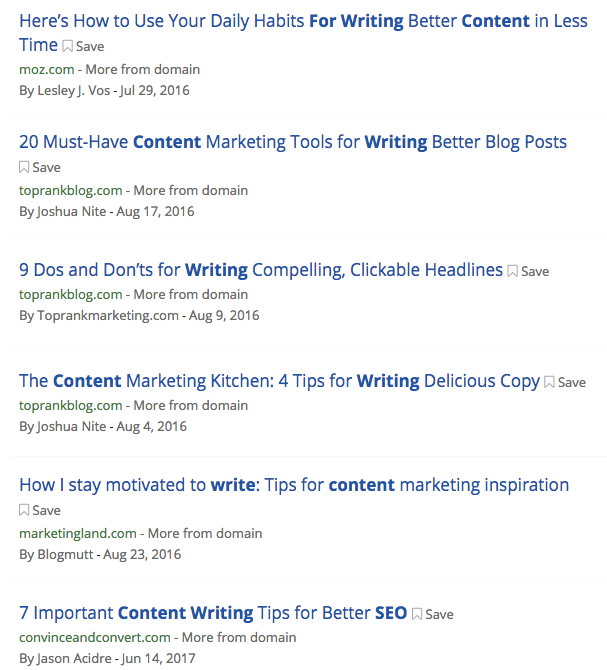
There are dozens of pages of examples like this. Note that each of these topics feature how-to themes. This will be important.
How to write your content
In order to write a solid piece of content, you need to have a firm grasp on searcher motivation. What is it a person would be trying to gain from searching the topic you have chosen to write about? Generally their motivation will align with one of three intentions:
- Navigational intent: Searcher is interested in understanding where some place is located, or the address for a specific website. For example, “Oakland Arby’s locations.” These people are looking for an address. Or if someone searches “Brafton,” they are looking for the URL for our site.
- Informational intent: Searcher wants to learn more about a specific topic. Their commercial interest is ambiguous; they may or may not have any interest in ever purchasing a product or service. Largely, they are interested in learning at this stage.
- Commercial intent: Searcher is shopping for products or services and likely comparing vendors. This searcher is most likely to provide commercial value should they arrive on your site.
Once you have categorized your topic into one of the three buckets above, you need to write content that will satisfy the intent of the searcher.
For example, if you have determined your topic to be of commercial intent, your content will need to feature clear calls to action, product/service benefits, and links to case studies/testimonials. Your visitor is looking to make a decision; help them make sure that decision is you.
For our example of “Writing content for SEO,” we can safely say this is an informational intent type of query. Searchers will be looking for a guide on how to achieve a goal.
Now that we have an understanding of the mindset of our searcher, we need to sufficiently satisfy their questions.
What to include in your content
We need to talk a little about content depth. Google wants to display content that is going to fully satisfy a searcher’s interest. A large part of this will be how you position your content based on your understanding of the searcher’s intent. However, you also have to know what concepts to write about.
You need to do a better job of covering the concepts people are interested in than the competition. You can do this in two ways:
1. Manually (the hard way): Search your keyword and read the articles that show up on the first page. Try to get a feel for the concepts they cover, and identify concepts that are not covered (gaps).
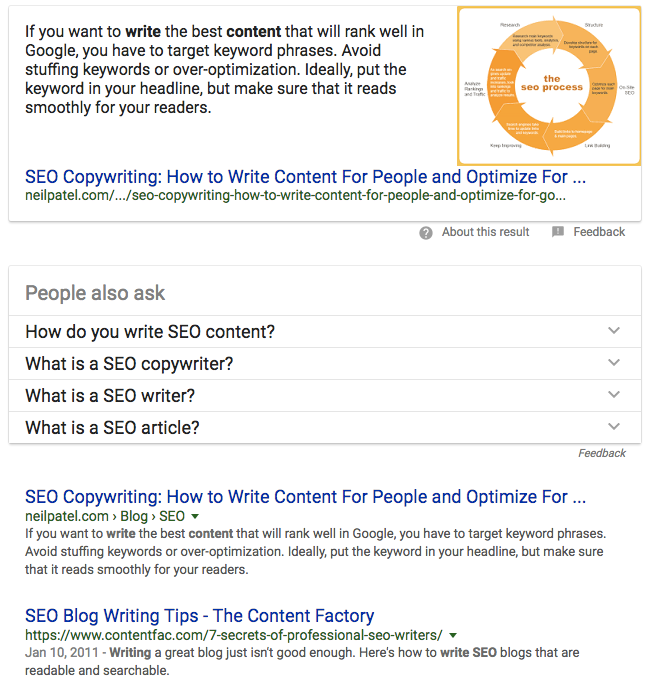
Identify which concepts are bare minimum table antes (what do you need to write about to get your foot in the door).
2. With a tool (the easy way): MarketMuse has developed a product that evaluates the competitive landscape for a keyword topic and provides a blueprint on the concepts your competitors are covering in their articles, as well as gaps . It will also produce an average content word count to give you an idea of how in-depth you will need to go.
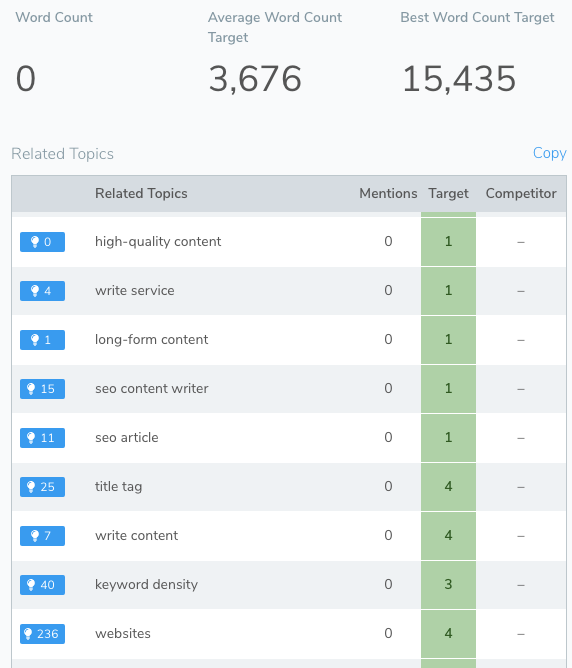
We see that the average article that ranks for “Writing content for SEO” is almost 3,800 words. Phew. People have a lot to say about this topic. We also see that some of the must-have concepts (amongst many others) include:
- Long-form content.
- Title tags.
- Keyword density.
- SEO content writer.
If we want to rank anywhere meaningful for this topic, we will need to write a beast of an article that covers a plethora of concepts.
Optimize on page
While content depth and semantic search rule the day, there are still technical issues Google takes into account when ranking a page. You need to ensure your page is being indexed, the title tag includes the keyword you are targeting, and content is properly formatted and crawlable.
Use Moz On-page Grader to make sure you have covered all your bases. Now it’s time to evaluate how your content is performing. Let’s dive into some Search Console analytics.
Evaluate performance
Take a look at your search visibility reports in Search Console. Go to Search Traffic → Search Analytics, then click on Pages and filter for the URL you created.
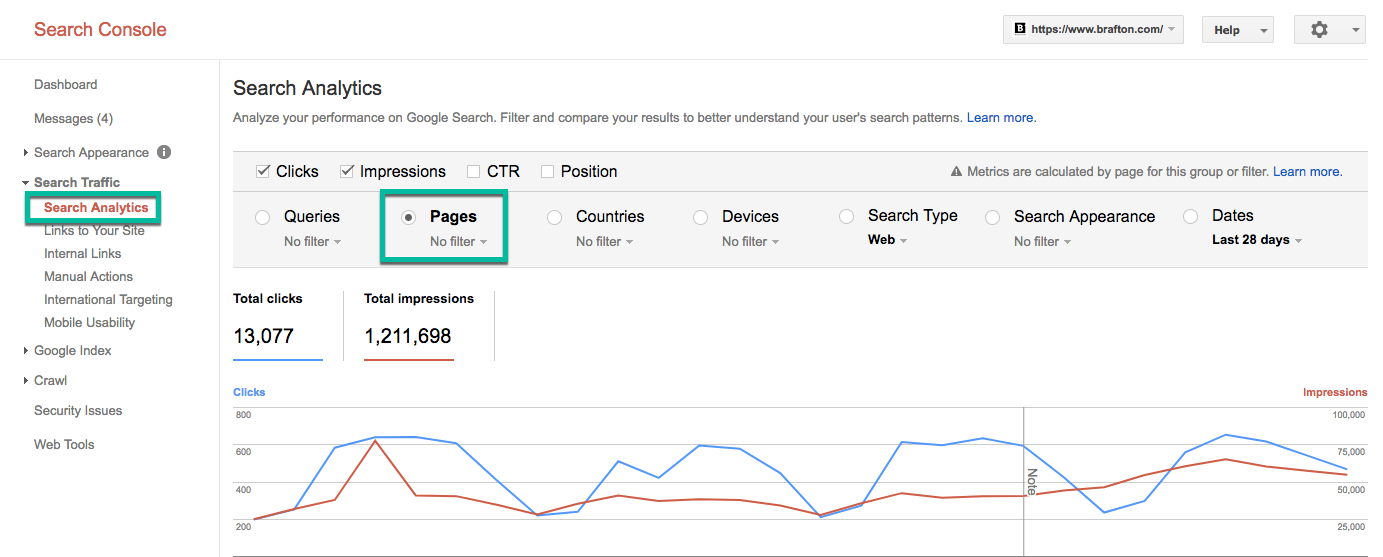
Take a look at how often your content is showing up in search results (impressions) and how often it is getting clicks, along with the average position.
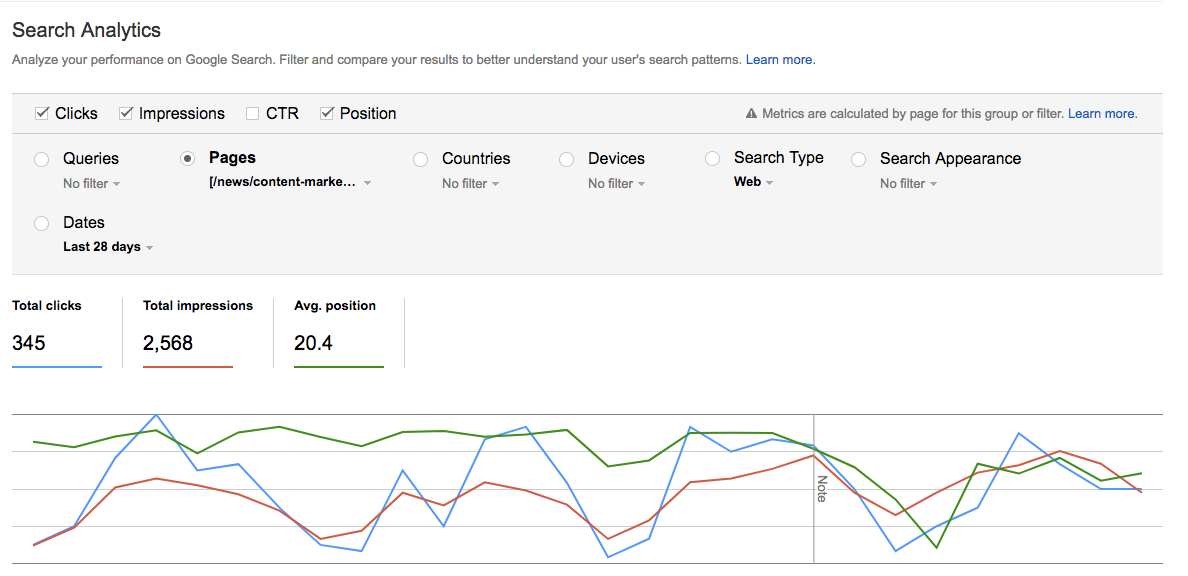
How did you do?
You should evaluate the performance of your work based on the amount of search interest it generates. Does it drive a lot of impressions? Are searchers clicking on your article? What do they do after they land on your page?
In summary, Google will reward you for writing the best content that satisfies the intent of someone searching a particular keyword. It’s your job to evaluate what keywords are of interest, whether or not you can realistically rank for them, and what topics to cover in order to satisfy the searcher’s intent.
That’s how you get Google to love you.





